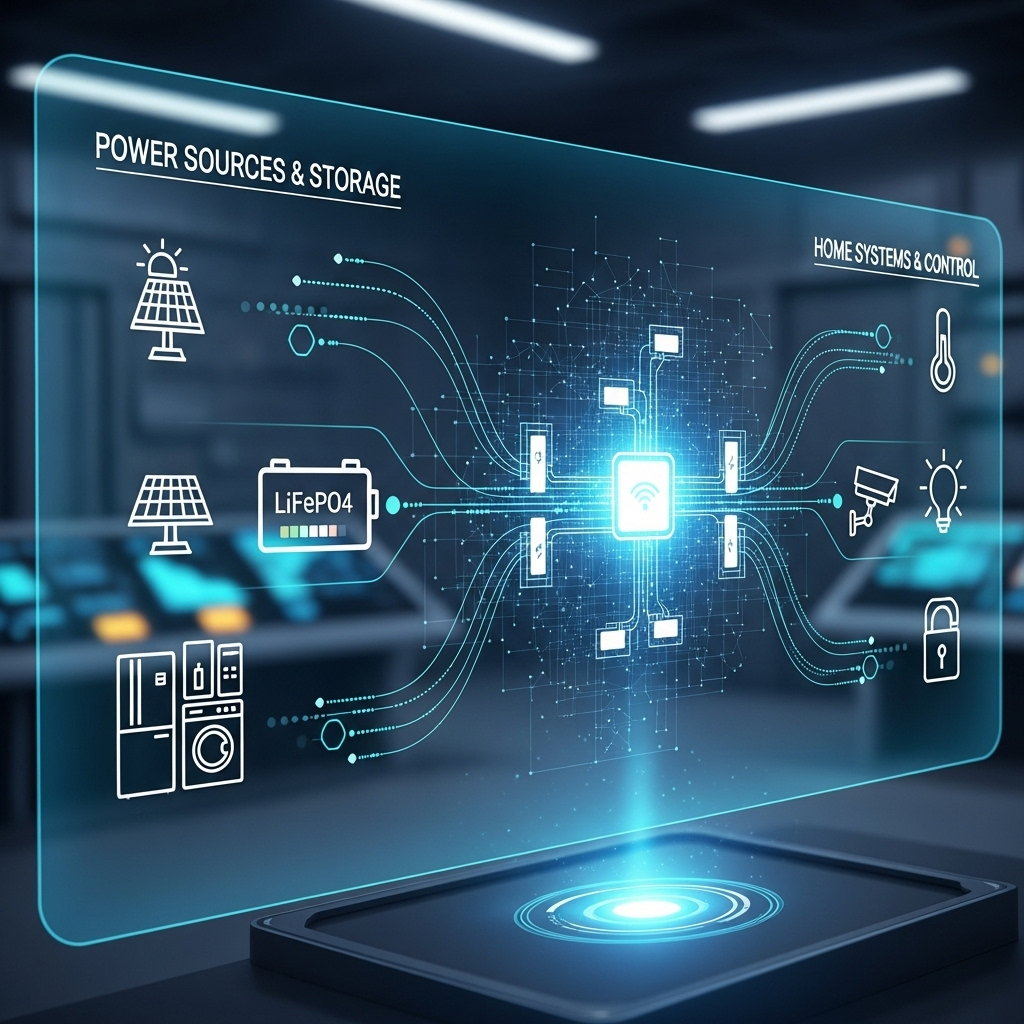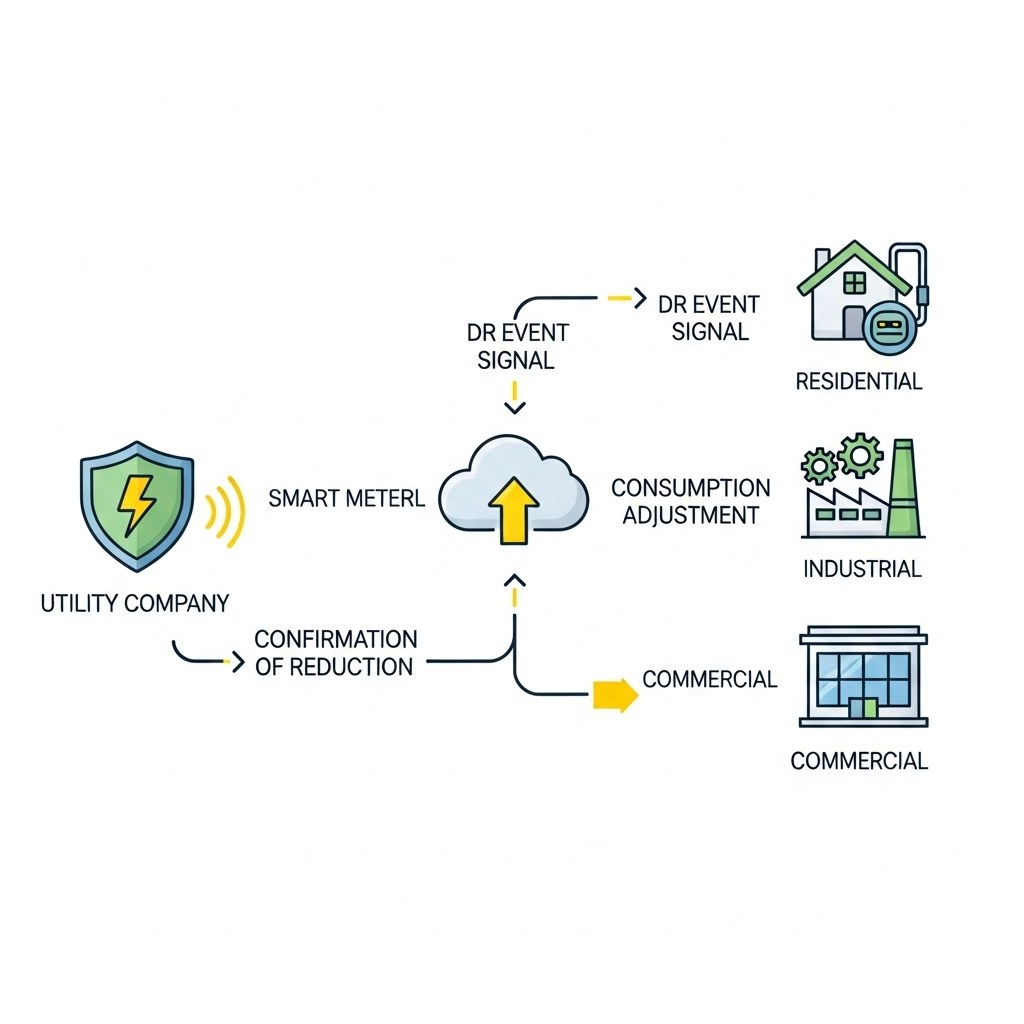For commercial and industrial (C&I) facility operators, managing energy consumption is a constant balancing act. You face complex utility bills, unpredictable peak demand charges, and the growing pressure to operate more sustainably. Gaining clear, actionable insight into your energy usage is the first step toward control. The Green Button initiative provides a powerful, standardized solution to access this crucial data, acting as a foundational toolkit for modern energy management.
This framework gives you the ability to unlock detailed energy data directly from your utility provider in a consistent, machine-readable format. By leveraging this information, you can move from reactive adjustments to proactive energy strategies, enhancing efficiency and reducing operational costs.
Understanding the Green Button Initiative
At its core, the Green Button is an industry-led effort to provide electricity customers with easy and secure access to their energy consumption information. It responds to a simple idea: you should have access to your own energy data in a way that is easy to use and understand.
A Standard for Energy Data
Supported by the U.S. Department of Energy, Green Button is not a specific product or piece of software. It is a data standard. This means it defines a common format for energy usage information, ensuring that data from different utilities is structured in the same way. This standardization, as highlighted by initiatives on standards and interoperability, is critical for developing consistent and scalable energy management solutions. It eliminates the need for custom-built integrations for each utility, simplifying the process for both customers and technology developers.
How Green Button Works: Connect & Download
The initiative offers two primary methods for accessing your data:
- Download My Data: This feature allows you to log into your utility account and manually download a file containing your historical energy usage. It's useful for one-time analyses or periodic reviews.
- Connect My Data: This is the more powerful option for ongoing C&I monitoring. It allows you to securely and automatically authorize third-party applications (like an energy management platform) to receive your energy data directly from the utility on a continuous basis. This automated stream is what enables real-time analytics and proactive control.
The Value Proposition for C&I Facilities
For a C&I operator, adopting Green Button translates into tangible benefits. You gain the ability to benchmark energy performance across multiple sites, identify equipment that is operating inefficiently, and accurately measure the impact of energy-saving upgrades. This data-driven approach supports better decision-making for capital investments in energy efficiency, solar generation, and battery storage systems.
The Operator's Toolkit: Implementing Green Button for C&I Monitoring
Putting Green Button to work in your facility involves a few straightforward steps. It's about connecting the data source to a system that can translate raw numbers into strategic insights.
Step 1: Verifying Utility Participation
The first action is to confirm that your electric utility supports the Green Button standard. A growing number of utilities across North America have adopted it. You can typically find this information on your utility's website or by checking the Green Button Alliance's list of participating companies. If your utility is a participant, you can proceed to access your data.
Step 2: Choosing the Right Monitoring Platform
While the raw data is valuable, its true power is unlocked through an energy management or building automation platform. When selecting a platform, look for one that explicitly offers Green Button integration. Key features to consider include:
- Customizable Dashboards: To visualize energy usage by building, floor, or even specific equipment.
- Alerting Systems: To notify you of unexpected consumption spikes or when you are approaching a new peak demand.
- Reporting Tools: To generate automated reports for internal stakeholders or for compliance purposes.
- Interoperability: Compatibility with other standards, such as OpenADR, for advanced demand response capabilities.
Step 3: Authorizing Data Access Securely
Using the 'Connect My Data' feature is a secure process that you control. The authorization workflow is similar to using a social media account to log into a third-party app. You will be redirected to your utility's secure portal to grant permission, and you can revoke that access at any time. This ensures your energy data is shared only with the applications you trust.
Practical Applications and Advanced Strategies
With data flowing, you can begin implementing strategies that directly impact your bottom line and sustainability goals.
Optimizing Energy Consumption and Reducing Peak Demand
Granular interval data (often in 15-minute increments) allows you to see exactly when you are using the most energy. This helps pinpoint opportunities to shift energy-intensive processes to off-peak hours when electricity is cheaper. For example, a manufacturing facility could analyze its data and discover that running a large compressor during peak afternoon hours contributes significantly to its demand charges. Shifting this operation to an overnight shift could result in substantial savings.
| Time of Day | Cost per kWh (Example) | Cost for 500 kWh Load |
|---|---|---|
| Peak (1 PM - 6 PM) | $0.25 | $125.00 |
| Off-Peak (10 PM - 6 AM) | $0.10 | $50.00 |
| Potential Daily Savings | $75.00 |
Integrating Solar and Energy Storage Systems
Green Button data is invaluable when planning and validating renewable energy projects. An accurate load profile is essential for correctly sizing a solar array and battery storage system. It ensures the system is designed to meet your actual consumption patterns, maximizing self-consumption and return on investment. Furthermore, once a system is installed, this data provides the baseline needed to verify its performance. For a deeper look at key metrics, the Ultimate Reference for Solar Storage Performance offers valuable benchmarks that can be cross-referenced with your Green Button data to confirm your system is delivering as promised.
Streamlining ESG Reporting and Compliance
Environmental, Social, and Governance (ESG) reporting is no longer optional for many businesses. Regulations are becoming more stringent. As noted in the IEA's Energy and AI report, directives are increasingly requiring companies to report on indirect greenhouse gas emissions, which includes electricity consumption. Green Button provides an auditable, verifiable source of data for this purpose, simplifying the reporting process and ensuring accuracy for frameworks like ISO 50001.
The Synergy of Green Button and OpenADR
For facilities ready to take the next step, combining Green Button with OpenADR (Open Automated Demand Response) creates a powerful system for grid interactivity.
A Powerful Combination for Grid Interactivity
If Green Button tells you *what* energy you are using, OpenADR tells you *when* the grid needs you to be flexible. OpenADR is a standard that allows utilities to send automated signals to customers during times of high grid stress or high wholesale energy prices. These signals can trigger pre-programmed actions in a facility's energy management system.
Enabling Automated Demand Response
Imagine your building management system receives an OpenADR signal about a critical peak pricing event. It could automatically dim lights by 10%, adjust HVAC setpoints by a few degrees, and delay the charging of electric vehicles. The Green Button data stream then provides near-real-time feedback to verify the load reduction and quantify the financial savings from participating in the demand response event. This level of automation and communication is vital for grid stability, a point emphasized in IRENA's analysis of Grid Codes for Renewable Powered Systems.
A Data-Driven Future for C&I Energy Management
The Green Button standard is more than a technical specification; it's a gateway to intelligent energy management. By providing a common language for energy data, it empowers C&I operators to move beyond estimated savings and generic advice. You gain the tools to make precise, data-backed decisions that reduce costs, improve operational resilience, and advance your sustainability objectives. In an energy landscape that increasingly values flexibility and efficiency, harnessing your own data is the key to staying ahead.
Frequently Asked Questions
Is Green Button data secure?
Yes, security is a core principle of the Green Button standard. Data access requires explicit authorization from you, the customer, through your utility's secure online portal. The 'Connect My Data' feature uses industry-standard protocols to ensure data is transmitted securely to the third-party applications you approve.
Does Green Button cost anything for C&I customers?
Accessing your own energy data through your utility's Green Button platform is typically free of charge. The cost associated with it usually comes from the third-party software or service platforms you might choose to analyze and visualize that data. These platforms provide the analytics, dashboards, and tools that turn raw data into actionable insights.
What kind of data can I get through Green Button?
Green Button provides detailed energy usage information. This typically includes historical billing data and, most importantly for C&I monitoring, granular interval data (e.g., in 15, 30, or 60-minute increments). This interval data is what allows for detailed load profile analysis to identify consumption patterns and peak demand.
How is Green Button different from just looking at my utility bill?
A utility bill provides a monthly summary of your total consumption and costs. Green Button data, especially interval data, offers a much more detailed view. Instead of a single number for the month, you get thousands of data points showing exactly when you used energy. This data is also in a standardized, machine-readable format (XML), which means it can be automatically fed into software for analysis, something you cannot do with a PDF bill.





Leave a comment
All comments are moderated before being published.
This site is protected by hCaptcha and the hCaptcha Privacy Policy and Terms of Service apply.